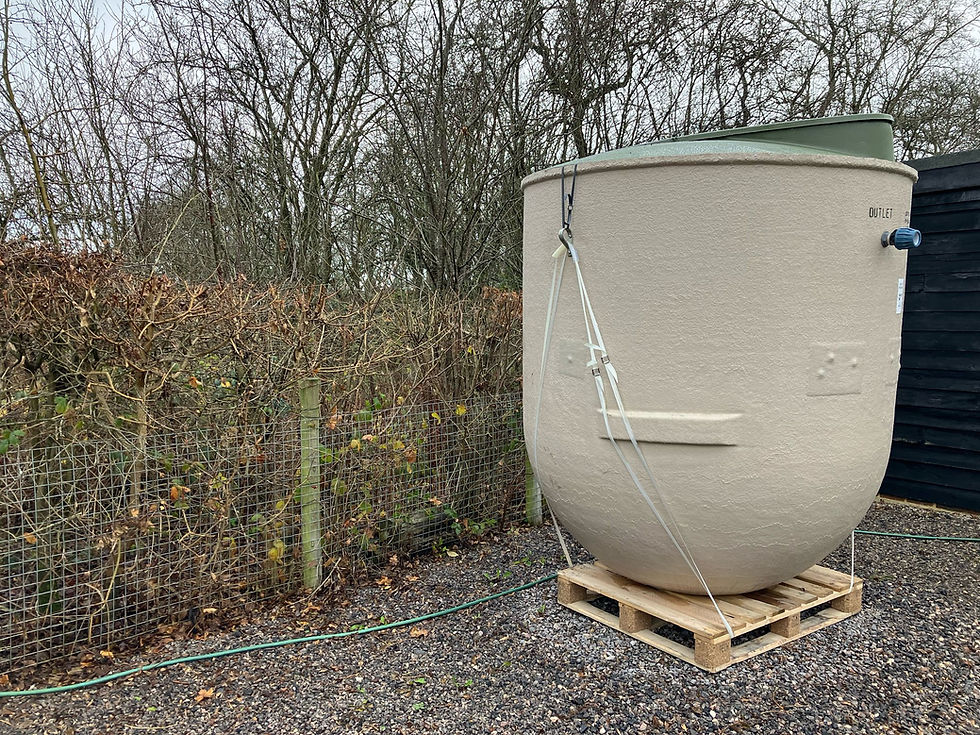What is a Septic Tank?
- KPCesspool Services

- Nov 8
- 4 min read
Many rural and off-grid properties in the UK rely on septic tanks to manage wastewater safely. While most households are connected to the mains sewer system, those in remote or rural areas often need independent waste treatment solutions. A septic tank provides an effective way to collect and process wastewater without releasing untreated waste into the environment. This guide explains what a septic tank is, how it works, and the responsibilities that come with owning one.
What Is a Septic Tank?
A septic tank is an underground chamber made from concrete, fibreglass, or plastic. It collects wastewater from a property and separates solids from liquids through natural settling and bacterial activity. The heavier waste sinks to the bottom to form sludge, while lighter materials like oils and grease float to the surface as scum. The liquid in the middle layer is partially treated and flows out to a drainage field or soakaway for further natural filtration. Unlike a cesspool, which only stores waste, a septic tank treats it before releasing the effluent safely into the ground. Regular Septic Tank Servicing is essential to maintain this process and prevent blockages or contamination.
How Does a Septic Tank Work?
A typical septic system has two main chambers. When wastewater enters the first chamber, solids settle at the bottom, and lighter waste floats to the top. The middle layer of liquid then flows into the second chamber for further settling. Natural bacteria inside the tank help break down the waste and begin the treatment process. From there, the liquid effluent exits the tank into a soakaway or drainage field, where it is filtered through soil before returning safely to the environment. For this process to work effectively, the tank must remain watertight and properly maintained. Regular desludging prevents the build-up of solids that could block pipes or overflow into the drainage field.
Where Are Septic Tanks Used?
Septic tanks are commonly used in rural or semi-rural areas where properties cannot connect to a mains sewer line. This includes isolated homes, small villages, farms, and businesses situated away from local drainage networks. They are also popular in coastal or countryside areas where the cost of connecting to a main sewer would be too high. In these settings, a septic tank offers an independent and reliable way to manage household wastewater safely.
Legal and Environmental Regulations
Septic tanks must comply with strict environmental standards to prevent pollution. The Environment Agency monitors how domestic sewage systems are installed and maintained across the UK. Under the General Binding Rules, homeowners must ensure their septic system does not pollute groundwater or nearby watercourses. Effluent from a septic tank can only discharge into a soakaway or drainage field, not directly into ditches or streams. If your system does not meet these conditions, you may need to upgrade to a compliant Treatment Plant Installation. Regular servicing, inspections, and record-keeping help ensure compliance and prevent costly enforcement action.
The Importance of Septic Tank Servicing
Routine maintenance is crucial for keeping a septic tank working efficiently. Over time, solids accumulate and reduce the tank’s capacity, increasing the risk of overflow or blockage. Regular Septic Tank Servicing helps remove this build-up and ensures the system continues to operate as intended. A professional engineer will inspect the tank for leaks, check the levels of sludge and scum, and test that the outlet pipes are clear. Most tanks require emptying once a year, though this depends on usage and tank size. Proper maintenance extends the life of your system and prevents pollution or costly repairs.
Common Problems with Septic Tanks
Even a well-maintained septic tank can experience issues. Some of the most common problems include blocked pipes, strong odours, slow drainage, or wet patches appearing near the soakaway. These signs often indicate that the tank is full or that there’s a problem with the drainage field. Chemical cleaners, disinfectants, and grease can also upset the bacterial balance inside the tank, reducing its ability to break down waste effectively. If problems arise, it’s best to contact an experienced engineer rather than attempting DIY fixes, as professional inspection ensures safe and compliant repair.
When to Replace or Upgrade a Septic Tank
If your septic tank is old, cracked, or failing to meet discharge standards, it may be time to consider a replacement. Modern systems are more efficient, environmentally friendly, and built to comply with current regulations. In some cases, replacing a septic tank with a New Tank Installation or upgrading to a sewage treatment plant can save money in the long run. An inspection by a qualified engineer can determine whether repair or full replacement is the best option for your property.
Preventative Maintenance Tips
Proper care and regular maintenance can prevent most septic tank issues. Avoid flushing non-biodegradable items, fats, or oils that can block pipes and reduce efficiency. Schedule regular servicing and emptying to keep the tank working at full capacity. If you experience slow drainage, unusual odours, or water pooling near the drainage area, book an inspection immediately. Routine checks also help identify Blocked Drains and Tanks early before they lead to larger system problems.
The Cost of Septic Tank Maintenance
The cost of maintaining a septic tank varies depending on its size, location, and frequency of servicing. On average, emptying and servicing cost between £150 and £300 per visit. Repairs or replacements can be more expensive, but regular maintenance significantly reduces the risk of major system failure. Investing in professional servicing is far more cost-effective than dealing with contamination or environmental fines caused by neglect.
Conclusion
Understanding what a septic tank is helps homeowners manage their waste systems responsibly and avoid unnecessary issues. A septic tank offers a reliable solution for properties without mains drainage, provided it is maintained regularly and kept in good condition. Routine servicing, inspections, and compliance with environmental standards are key to ensuring safe, efficient, and long-lasting operation. Whether you need maintenance, repair, or advice on upgrading your system, professional help ensures your septic tank continues to perform safely and effectively for years to come.




Comments